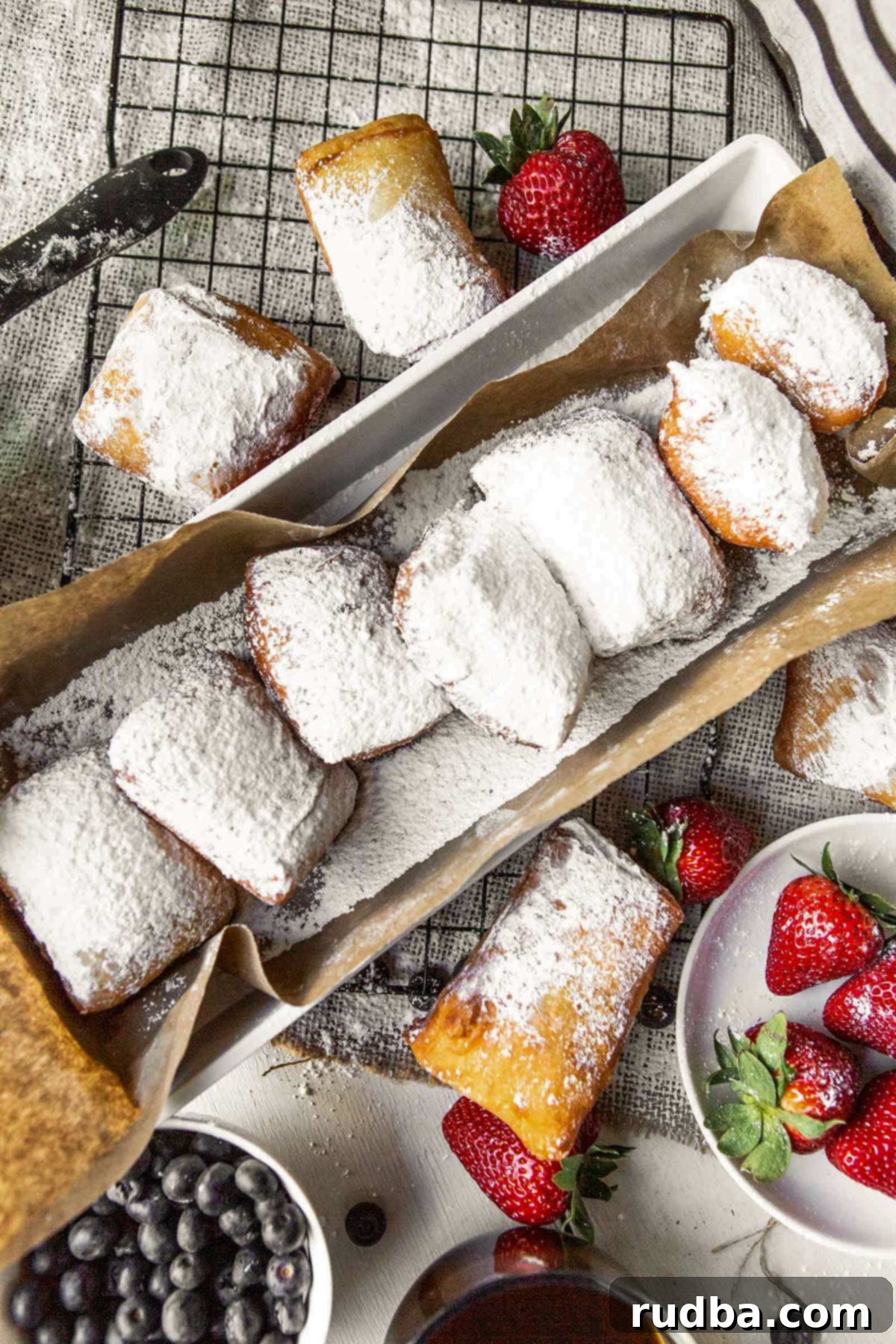Indulge in French-Inspired Fluffiness: Your Guide to Perfect Homemade Beignets
These Homemade Beignets will transport your taste buds straight to the heart of France or the vibrant streets of New Orleans, allowing you to savor a truly delightful experience. Imagine a pastry with a delicate, lightly crisp exterior that gives way to an invitingly soft, cloud-like interior. Dusted generously with a snowy coating of powdered sugar, these irresistible treats are the quintessential dessert, breakfast, brunch, or snack for any occasion. Prepare to impress your family and friends with a batch of these glorious golden squares!
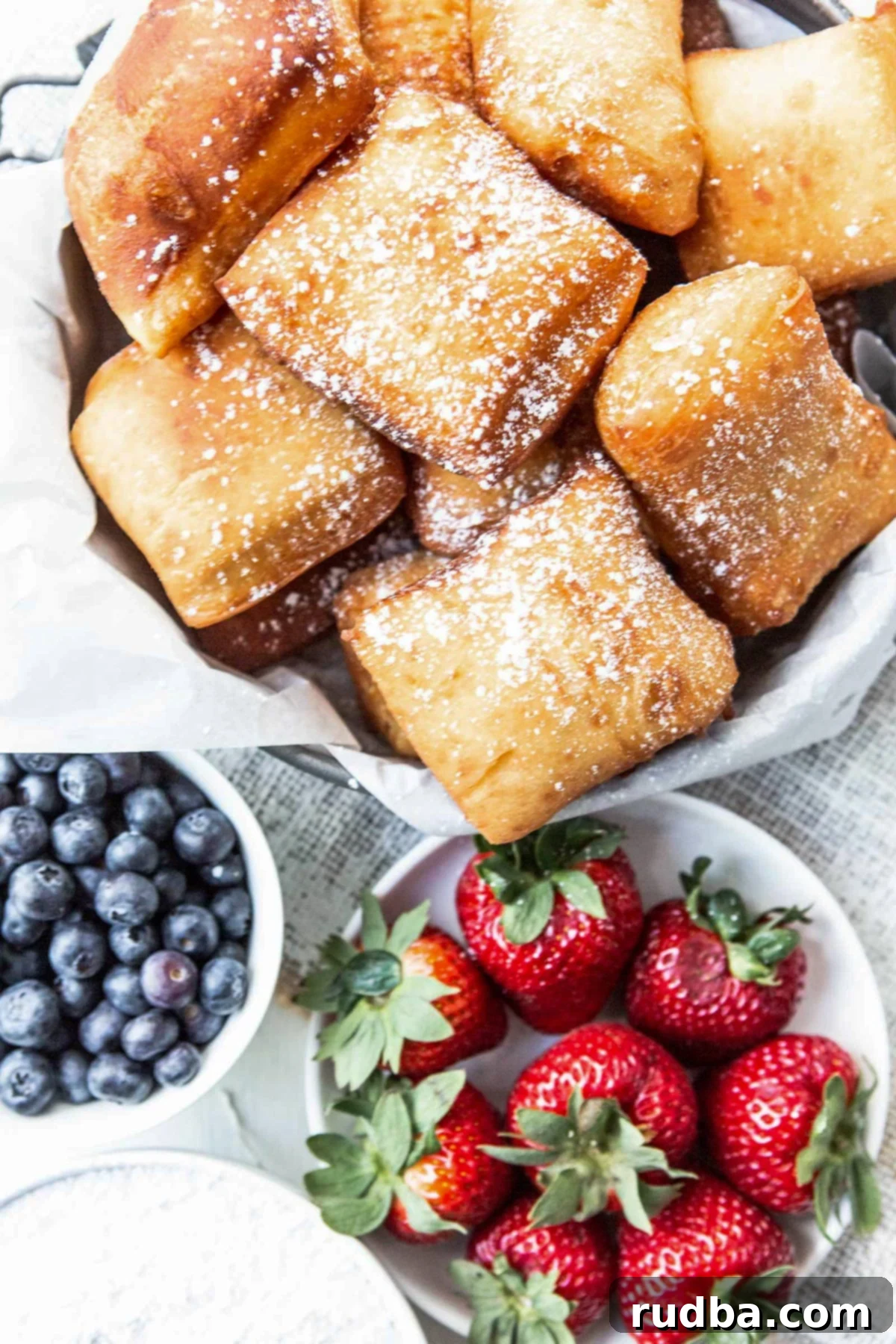
I have a sweet confession to make: my heart truly belongs to deep-fried desserts. There’s something undeniably magical about the transformation that occurs when dough meets hot oil, resulting in a golden-brown exterior and a tender, flavorful inside. When you stop to think about it, many of the world’s most beloved sweet treats owe their existence to a good old-fashioned deep fry. Among my personal favorites are indulgent Deep Fried Oreos, comforting Apple Fritters, and, of course, these incredible homemade beignets. I genuinely cannot get enough of them, which is why I often find myself making them in smaller batches – a necessary measure to ensure I don’t devour the entire spread in one sitting! The joy of creating these iconic pastries from scratch is immensely rewarding, and the resulting taste is absolutely worth every step.
Crafting Your Own Beignets: A Step-by-Step Guide
Making beignets at home might seem daunting, but with this straightforward recipe, you’ll be whipping up these delightful treats like a seasoned pro. Each step is designed to guide you to perfect, airy, and delicious beignets every time.
- Activate the Yeast: In a medium-sized bowl, gently combine the active dry yeast with warm water. It’s crucial that the water is warm (around 105-115°F or 40-46°C) – too hot will kill the yeast, and too cold won’t activate it. Stir until the yeast dissolves completely. Then, add a teaspoon of sugar, which acts as food for the yeast, helping it to activate. Let this mixture sit undisturbed for 10-15 minutes. You’ll know your yeast is active and ready when a foamy layer appears on the surface, indicating it’s alive and thriving. This step is vital for the beignets’ signature rise and airy texture.
- Prepare the Wet Dough Mixture: In a separate, larger mixing bowl, whisk together the eggs, the remaining sugar, and the evaporated milk until well combined. The evaporated milk contributes a wonderful richness and tenderness to the dough. Once the yeast mixture is foamy, carefully add the egg mixture to it and whisk thoroughly. This ensures all the wet ingredients are evenly distributed, laying the foundation for a cohesive dough.
- Form the Beignet Dough: Now it’s time to start building your dough. Add all of the shortening – which helps create a tender crumb – and approximately half of the bread flour to your wet mixture. Mix everything together well, either with a sturdy spoon or a stand mixer fitted with a dough hook. Once partially combined, incorporate the rest of the bread flour. Continue mixing until a shaggy dough forms. Then, beat the dough until it becomes smooth and starts to pull away from the sides of the bowl.
- Knead and Proof for Perfection: Turn the smooth dough out onto a lightly floured surface. Knead the dough vigorously for about 5-7 minutes until it becomes exceptionally smooth and elastic. This kneading process is essential for developing the gluten, which gives beignets their characteristic chewiness. Once kneaded, place the dough in a greased bowl, turning it once to ensure the top is also lightly oiled to prevent a crust from forming. Cover the bowl with plastic wrap or a clean kitchen towel and let it rise in a warm, draft-free place for a full hour. After the first rise, gently punch down the dough to release the accumulated gases, re-oil the top, cover again, and let it rise for a second hour. This double-rise enhances flavor and texture. Finally, transfer the risen dough back to a floured surface, roll it out evenly, and cut it into traditional squares or rectangles, about 2-3 inches per side.
- Fry to Golden Perfection and Serve: Heat a generous amount of vegetable oil in a deep fryer or a large, heavy-bottomed pot to about 350-375°F (175-190°C). Carefully place a few dough squares into the hot oil, being careful not to overcrowd the pan, as this will lower the oil temperature. Fry each beignet for about 2-3 minutes per side, or until they puff up beautifully and turn a rich golden brown. Use a slotted spoon or mesh skimmer to remove the fried beignets and place them on a plate lined with paper towels to drain any excess oil. While still warm, generously coat them with a mountain of powdered sugar. Serve immediately and savor every glorious bite!
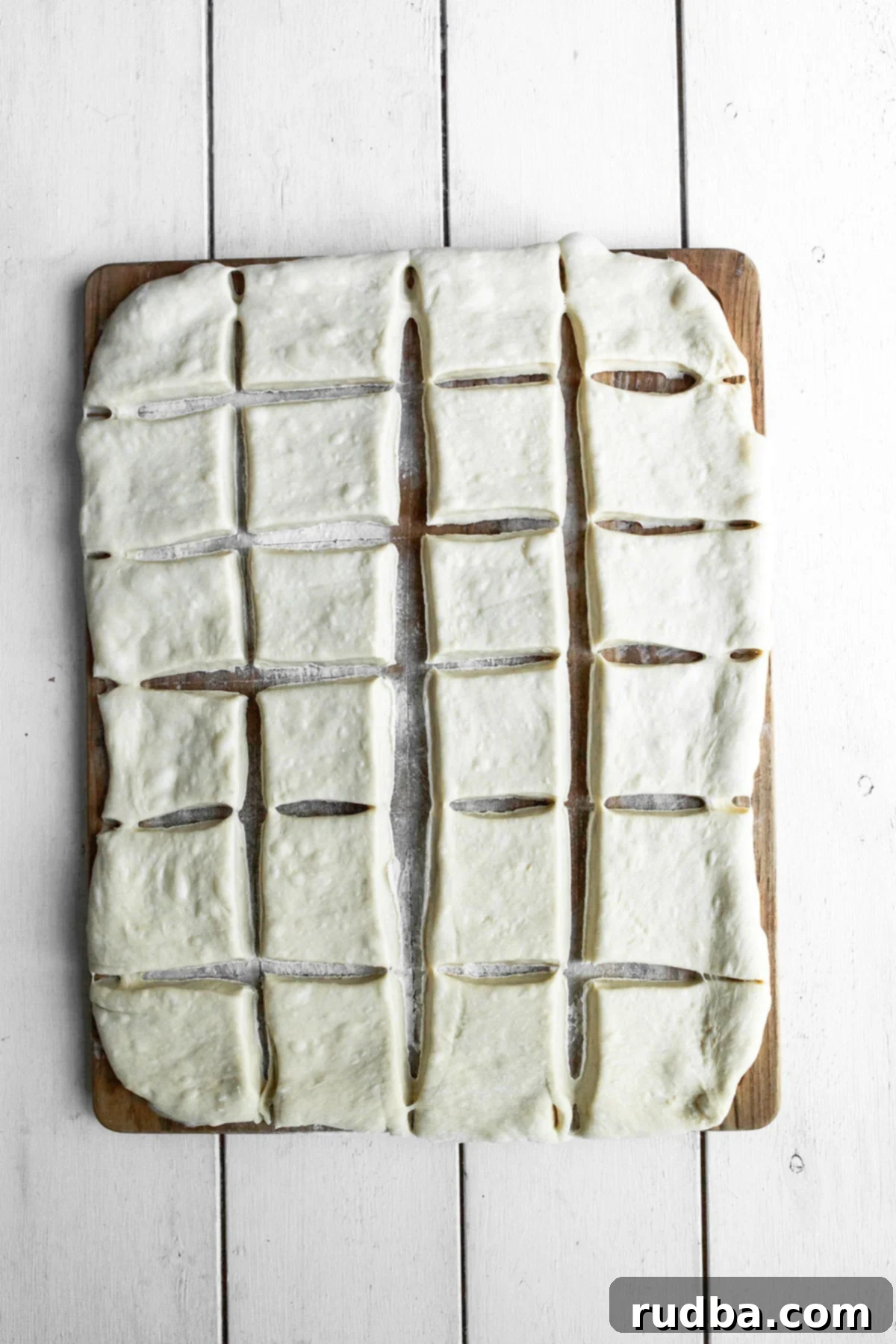
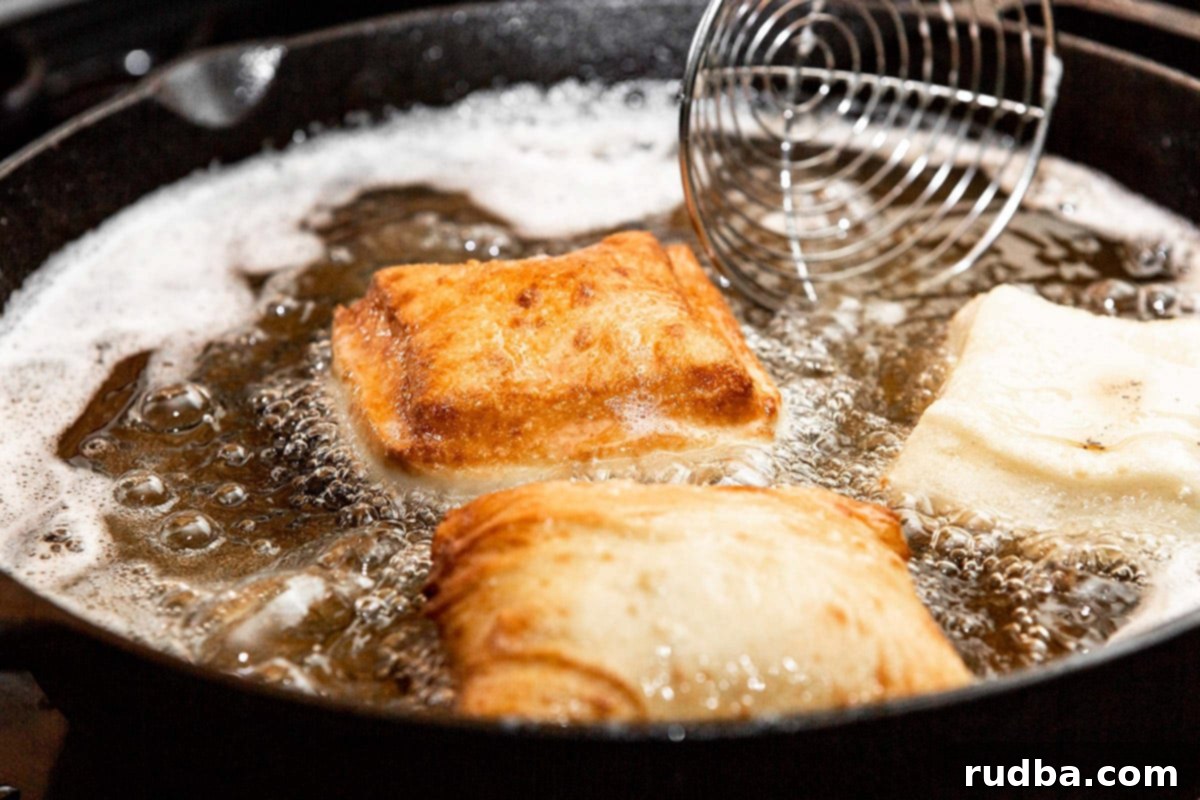
Expert Tips and Delicious Variations for Your Beignets
To ensure your homemade beignets are always a success and to offer exciting new ways to enjoy them, here are some invaluable tips and creative variations.
- Optimal Storage: To keep your beignets fresh, store them in an airtight container. They can be kept at room temperature in your pantry for up to 5 days, though they are best enjoyed fresh. If you wish to extend their freshness, place them in the fridge where they will remain good for up to 2 weeks. For longer storage, you can freeze them for up to 3 months. When storing, consider placing parchment paper between layers to prevent sticking.
- Effortless Reheating: Reheating beignets is simple. If they’re from the fridge or pantry, a few seconds in the microwave (5-10 seconds per beignet) is usually all it takes to warm them through. If reheating from the freezer, it’s best to let them thaw to room temperature first. This helps prevent them from becoming chewy or tough in the microwave. Once thawed, heat them briefly for a soft, warm treat. For a crispier exterior, a quick flash in a toaster oven for a minute or two can also work wonders.
- Creative Topping Ideas: While powdered sugar is the classic choice, don’t limit yourself! These pastries are incredibly versatile. Drizzle them with warm chocolate syrup, caramel sauce, or a fluffy marshmallow cream for an extra layer of sweetness. For a fresh, vibrant contrast, top them with fresh berries like strawberries, blueberries, or raspberries. A dollop of fruit compote, a sprinkle of cinnamon sugar, or even a citrus glaze can also elevate your beignets to new heights.
- Freezing Dough for Future Enjoyment: Absolutely! You can prepare the dough in advance and freeze it for later use. After the second rise and punching down, wrap the dough tightly in plastic wrap, then place it in a freezer-safe bag. It can be stored in the freezer for up to 2-3 weeks. When you’re ready to use it, transfer the frozen dough to the fridge overnight to thaw, then let it come to room temperature and rise again for about an hour before punching it down, rolling it out, and cutting it into squares for frying. This is a fantastic way to enjoy fresh beignets with minimal effort on a whim.
- On the Question of Yeast-Free Beignets: For this traditional beignet recipe, yeast is an indispensable ingredient. It’s the active dry yeast that gives these pastries their signature airy, puffy texture and slightly tangy flavor. Without yeast, you wouldn’t achieve the characteristic rise and delicate chewiness that defines a true beignet. While other fried dough recipes might use baking powder or soda for leavening, they would result in a different type of pastry. Therefore, for an authentic homemade beignet experience, yeast is vital.

Understanding the Iconic New Orleans Beignet
When we talk about beignets, especially in the American context, our minds often drift to the legendary Cafe du Monde in New Orleans. This recipe aims to replicate that iconic experience, capturing the essence of what makes their beignets so famous. Even if you’ve sampled beignets elsewhere, you haven’t truly experienced a “beignet” until you’ve visited the historic French Quarter in New Orleans and indulged in their rendition. While they use the same fundamental recipe as many other beignet makers, Cafe du Monde has truly mastered the nuanced process, consistently producing a perfect outcome that has drawn crowds for over a century. The atmosphere, the aroma of fried dough and chicory coffee, and the sheer volume of powdered sugar create an unforgettable culinary pilgrimage. Visiting Cafe du Monde for their beignets is definitely on my culinary bucket list, and I wholeheartedly recommend adding it to yours as well for an authentic taste of history and flavor.
Beignet vs. Donut: Unpacking the Differences
At first glance, donuts and beignets appear quite similar. Both are delightful forms of fried dough, often adorned with a sweet “dressing” on the outside, such as confectioner’s sugar. However, delve a little deeper, and you’ll discover distinct characteristics. Traditional beignets tend to have a chewier, heartier texture compared to a typical donut. Beignets are almost always yeast-leavened, giving them an airy yet substantial crumb, and are traditionally square or rectangular in shape, without a hole. Donuts, on the other hand, can be yeast-leavened or cake-style (using baking powder/soda), come in a wider variety of shapes (ring, filled, cruller), and are often glazed, frosted, or filled. While the lines can sometimes blur, especially with the innovation in modern donut shops, the classic beignet stands apart in its simplicity and unique texture. For instance, these Nutella Stuffed Donuts, with their rich filling and soft dough, might remind you of the indulgent nature of beignets, but they still retain their distinct donut identity.
Now that you’re armed with all the knowledge and a fantastic recipe, go ahead and give these Homemade Beignets a whirl! I guarantee the sweet, fluffy results will be worth every moment. Don’t forget to share your experience and let me know what you think in the comments below!
More Pastry Style Recipes You’re Sure to Love:
If you enjoyed making these beignets, you might also love exploring other delicious pastry recipes that bring joy to any table. Here are some delectable suggestions:
- Churros
- Donut Holes
- Pastelitos de Guayaba y Queso (Guava and Cheese Pastries)
- Pastelitos de Carne (Meat Pastries)
- Baked Chocolate Donuts
For even more delicious recipes, cooking tutorials, and culinary inspiration, be sure to visit and subscribe to my channels on Youtube and Facebook. Happy baking!
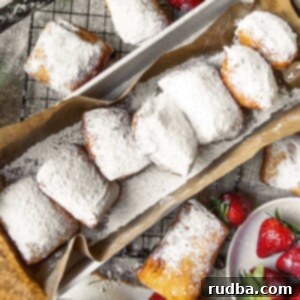
Homemade Beignets
Save RecipeSaved Recipe
Pin Recipe
Rate Recipe
Print Recipe
Ingredients
- 2 tsp dry active yeast
- 1/2 cup white sugar
- 1 1/2 cups warm water
- pinch of salt
- 2 eggs
- 1 cup evaporated milk
- 1/4 cup shortening
- 5 1/2 cups bread flour
- Powdered Sugar to Taste
Instructions
-
In a large bowl, dissolve the dry active yeast in warm water. Add a tsp of sugar and let it sit for about 10-15 minutes
-
In a separate bowl, add the condensed milk, eggs, and remaining sugar and mix.
-
Add the wet ingredients to the yeast mixture and give it a whisk.
-
Add half of the bread flour and the shortening and mix
-
Add the remaining flour and mix until well incorporated
-
Beat until nice and smooth, you want a soft, slightly sticky ball of dough
-
Turn onto a floured surface, knead until smooth and elastic
-
Place in a greased bowl, turning once to grease the top, cover and let it rise in a warm place for 2 hours
-
Punch dough down, Turn onto a floured surface, roll the dough out with your floured rolling pin and then cut into small squares or rectangles.
-
Fry in vegetable oil for about 2-3 minutes on each side
-
Sprinkle with powdered sugar and enjoy!
Video
Nutrition
Nutrition information is automatically calculated, so should only be used as an approximation.
Additional Info
Like this recipe? Leave a comment below!
